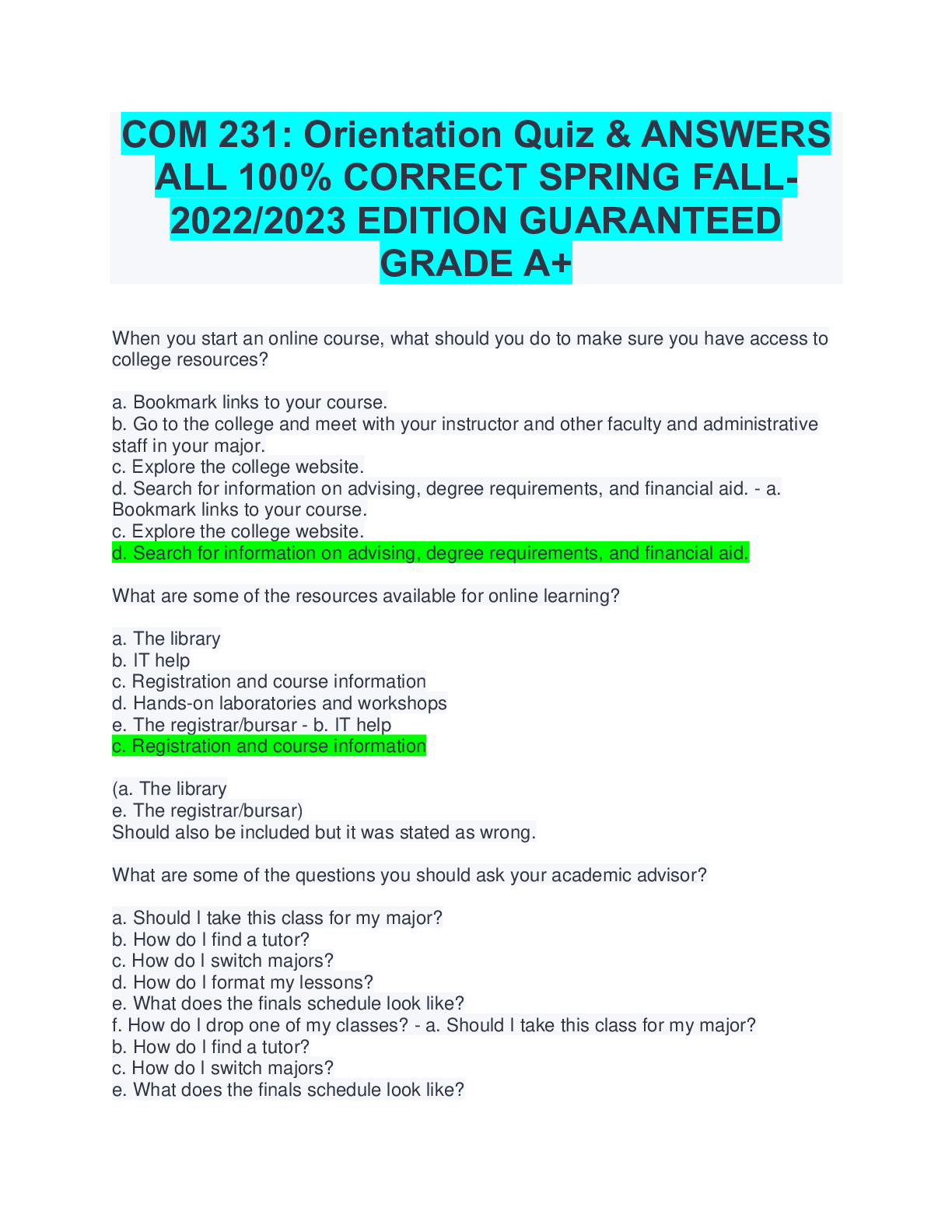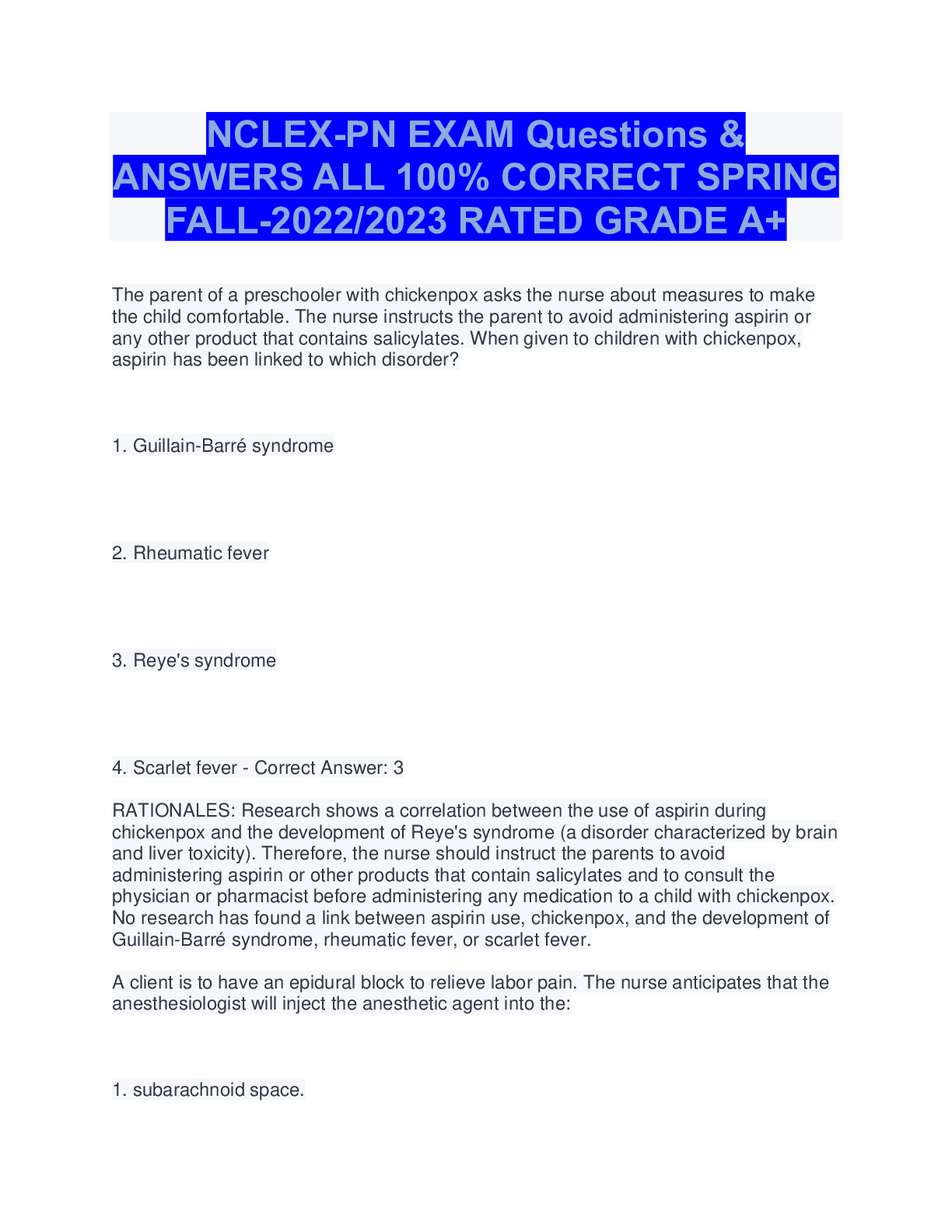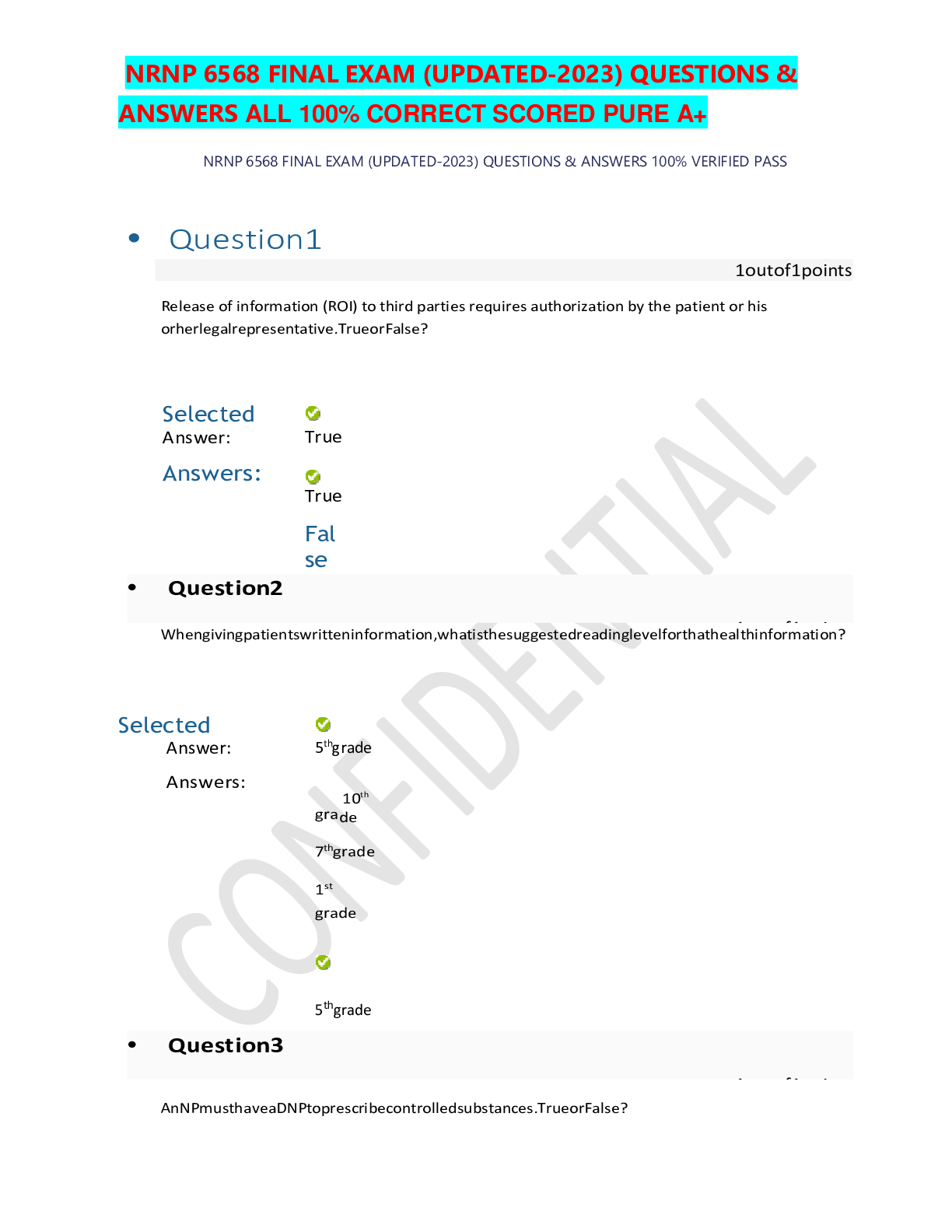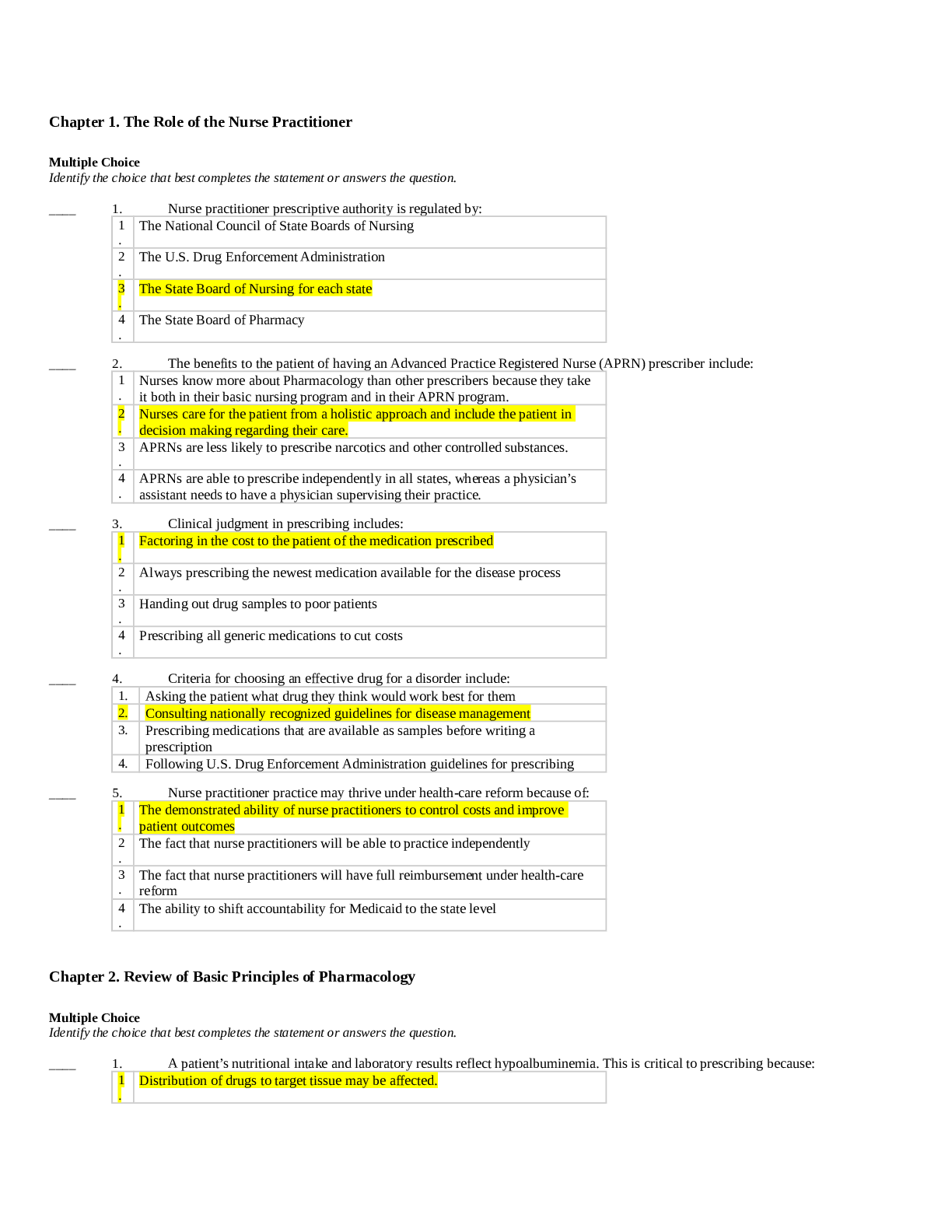*NURSING > EXAM > HESI CRITICAL THINKING EXAM LATEST 2021, complete questions & answers all graded A (All)
HESI CRITICAL THINKING EXAM LATEST 2021, complete questions & answers all graded A
Document Content and Description Below
HESI CRITICAL THINKING EXAM LATEST 2021, complete questions & answers all graded A-1. The nurse is working in the emergency department (ED) of a children's medical center. Which client should the nurs... e assess first? Correct - 3-The child hit by a car should be assessed first because he or she may have life- threatening injuries that must be assessed and treated promptly. 2. The 8-year-old client diagnosed with a vaso-occlusive sickle cell crisis is complaining of a severe headache. Which intervention should the nurse implement first? Correct - 2-Because the client is complaining of a headache, the nurse should first rule out cerebrovascular accident (CVA) by assess- ing the client's neurological status and then determine whether it is a headache that can be treated with medication. 3. The 6-year-old client who has undergone abdominal surgery is attempting to make a pinwheel spin by blowing on it with the nurse's assistance. The child starts crying because the pinwheel won't spin. Which action should the nurse implement first? Correct -1. The nurse should always praise the child for attempts at cooperation even if the child did not accomplish what the nurse asked. 4. The nurse is caring for clients on the pediatric medical unit. Which client should the nurse assess first? Correct - 4. A pulse oximeter reading of less than 93% is significant and indicates hypoxia, which is life threatening; therefore, this child should be assessed first. 5. The nurse has received the a.m. shift report for clients on a pediatric unit. Which medication should the nurse administer first? Correct - 3-Sliding scale insulin is ordered ac, which is before meals; therefore, this medication must be administered first after receiving the a.m. shift report. 4-Routine medications have a 1-hour leeway before and after the scheduled time; therefore, this medication does not have to be adminis- tered first. 6. A 5-year-old boy is being admitted to the hospital to have his tonsils removed. Which information should the nurse collect before this procedure? D. Reactions to previous hospitalizations Rationale Assess how the child reacted to hospitalization and any complications. If the child reacted poorly, he or she may be afraid now and will need special preparation for the examination that is to follow. The other items are not significant for the procedure 7. A 6-month-old infant has been brought to the well-child clinic for a check-up. She is currently sleeping. What should the nurse do first when beginning the examination? ) Auscultate the lungs and heart while the infant is still sleeping. Rationale When the infant is quiet or sleeping is an ideal time to assess the cardiac, respiratory, and abdominal systems. Assessment of the eye, ear, nose, and throat are invasive procedures and should be performed at the end of the examination. 6. The nurse enters the client's room and realizes the 9-month-old infant is not breath- ing. Which interventions should the nurse implement? Prioritize the nurse's actions from first (1) to last (5). Rationale Correct Answer: 4, 5, 3, 2, 1 4. The nurse must first determine the infant's responsiveness by thumping the baby's feet. 5. The nurse should then open the child's airway using the head-tilt chin-lift tech- nique, with care taken not to hyperextend the neck. Then the nurse should look, listen, and feel for respirations. 3. The nurse then administers quick puffs of air while covering the child's mouth and nose, preferably with a rescue mask. 2. The nurse should determine whether the infant has a pulse by checking the brachial artery. 1. If the infant has no pulse, the nurse should begin chest compressions using two fingers at a rate of 30:2. 7. The 3-year-old client has been admitted to the pediatric unit. Which task should the nurse instruct the unlicensed assistive personnel (UAP) to perform first? Correct - 1.The first intervention after the child is ad- mitted to the unit is to orient the parents and child to the room, the call system, and the hospital rules, such as not leaving the child alone in the room. 8. The clinic nurse is preparing to administer an intramuscular (IM) injection to the 2- year-old toddler. Which intervention should the nurse implement first? Correct - 2-The nurse must explain any procedure in words the child can understand. It does not matter how old the child is. . The nurse is writing a care plan for the 5-year-old child diagnosed with gastroenteritis. Which client problem is priority? Correct - 2-The child diagnosed with gastroenteritis is at high risk for hypovolemic shock resulting from vomiting and diarrhea; therefore, maintaining fluid and elec- trolyte homeostasis is priority. 10. Which data would warrant immediate intervention from the pediatric nurse? 1. Proteinuria for the child diagnosed with nephrotic syndrome. Correct - 3-Drooling indicates the child is having trouble swallowing, and the epiglottis is at risk of completely occluding the air- way. This warrants immediate interven- tion. The nurse should notify the HCP and obtain an emergency tracheostomy tray for the bedside. 11. Which client should the pediatric nurse assess first after receiving the a.m. shift report? 4. The 13-month-old child diagnosed with diarrhea who has sunken eyeballs and decreased urine output. Rationale Correct - 4. Sunken eyeballs and decreased urine out- put are signs of dehydration, which is a life-threatening complication of diarrhea; therefore, this child should be assessed first. 12. The pediatric clinic nurse is triaging telephone calls. Which client's parent should the nurse call first? 1. The 4-month-old child who had immunizations yesterday and the parent is report- ing a high-pitched cry and a 103°F fever. Correct 1-A high fever and high-pitched crying may indicate a reaction to the immunizations; therefore, this parent needs to be called first to bring the child to the clinic. [Show More]
Last updated: 1 year ago
Preview 1 out of 29 pages
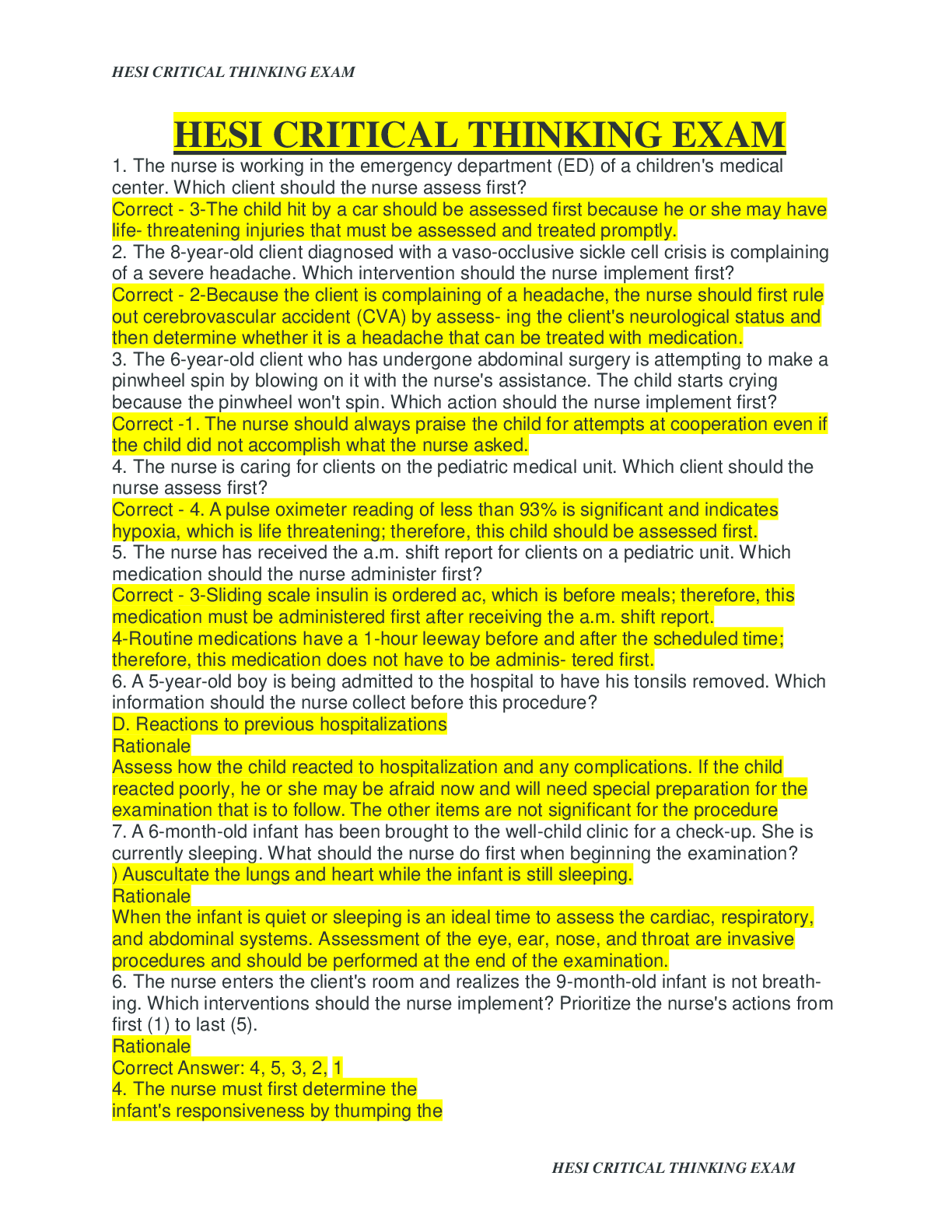
Reviews( 0 )
Document information
Connected school, study & course
About the document
Uploaded On
May 19, 2021
Number of pages
29
Written in
Additional information
This document has been written for:
Uploaded
May 19, 2021
Downloads
0
Views
39







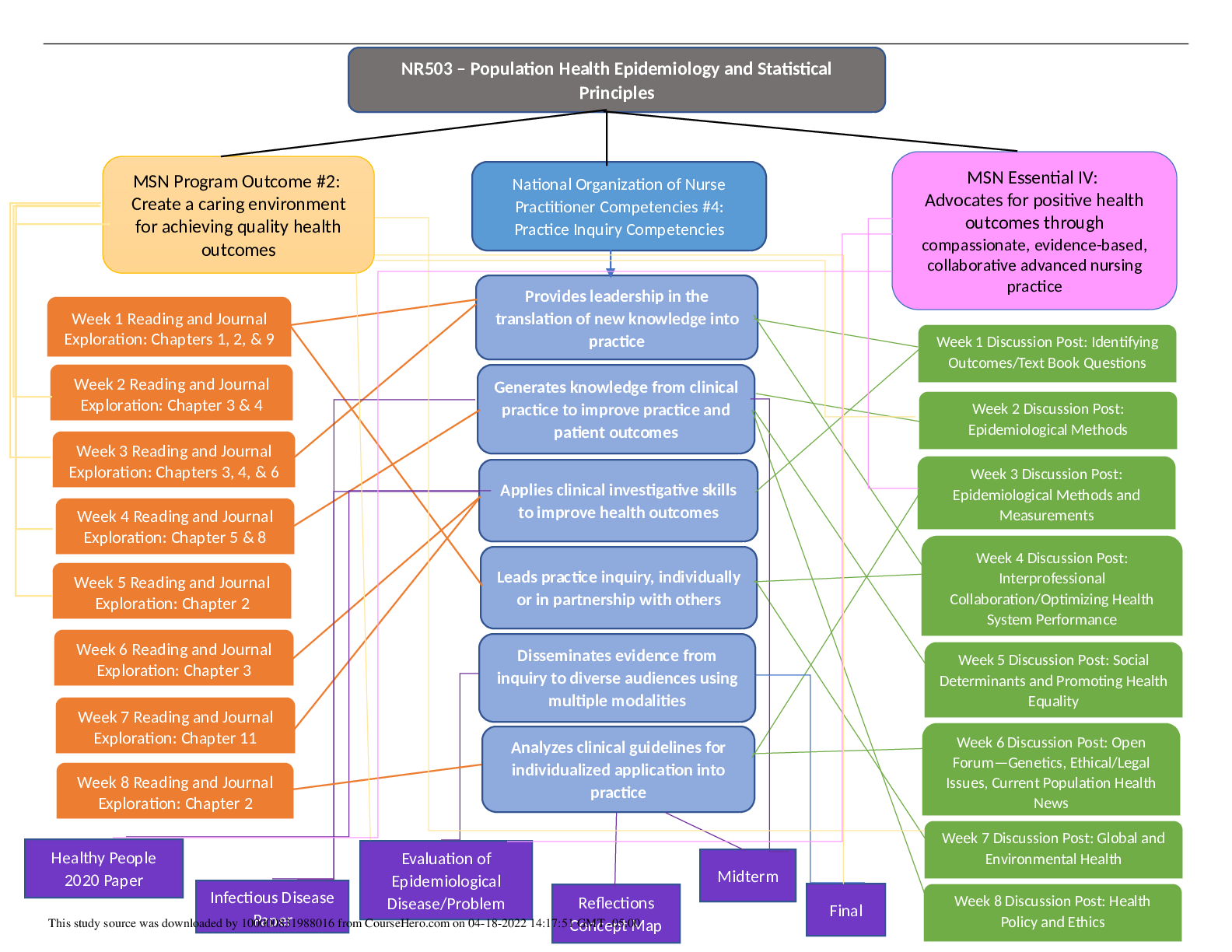

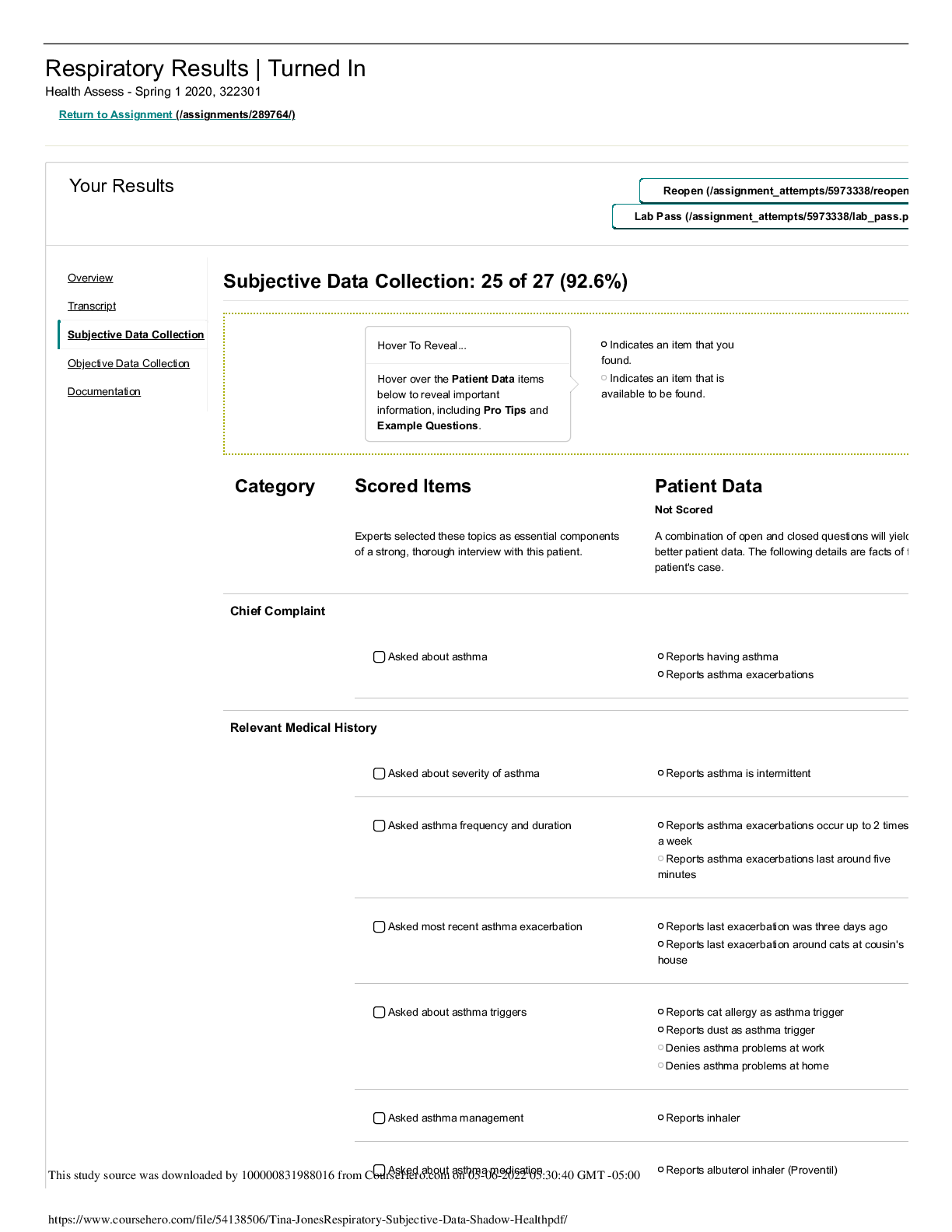
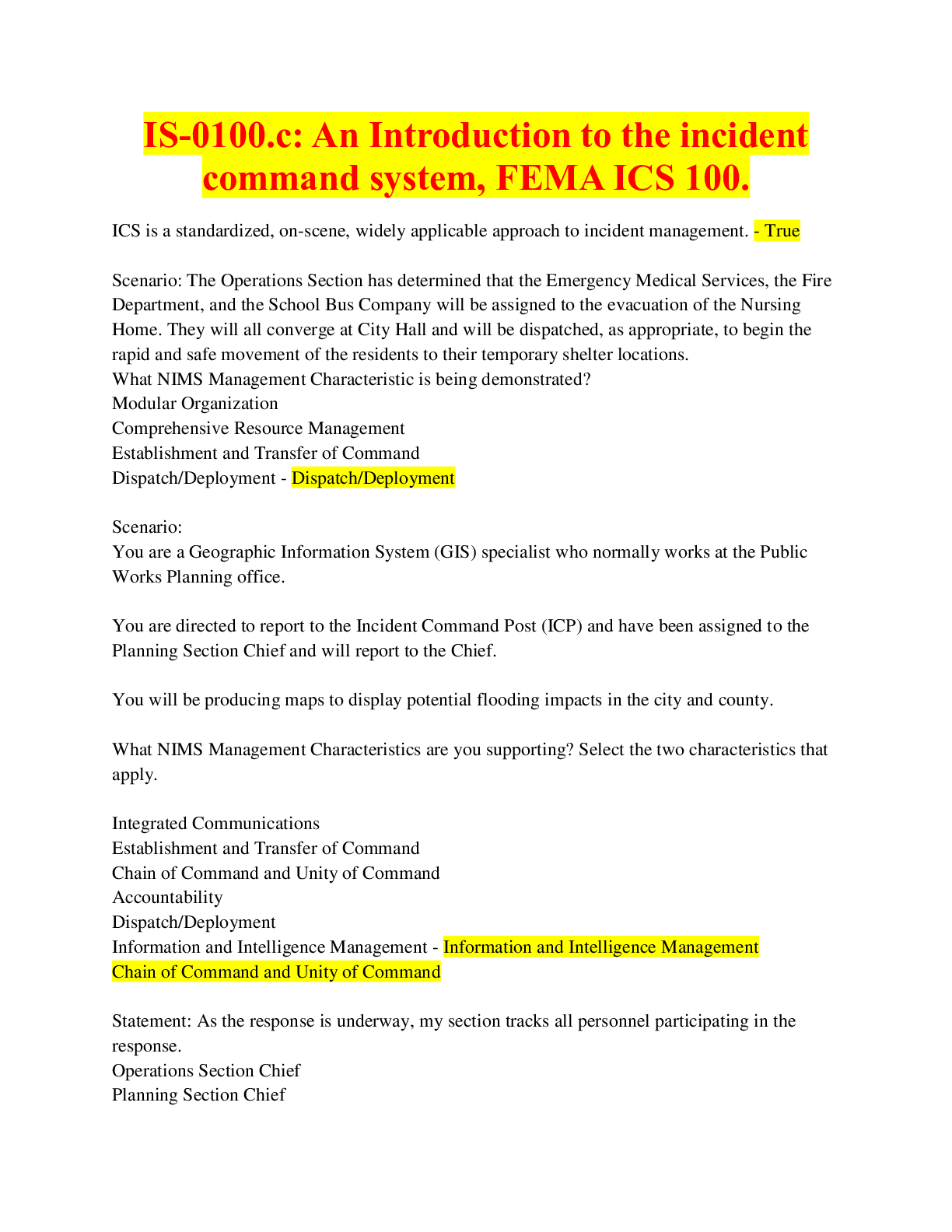



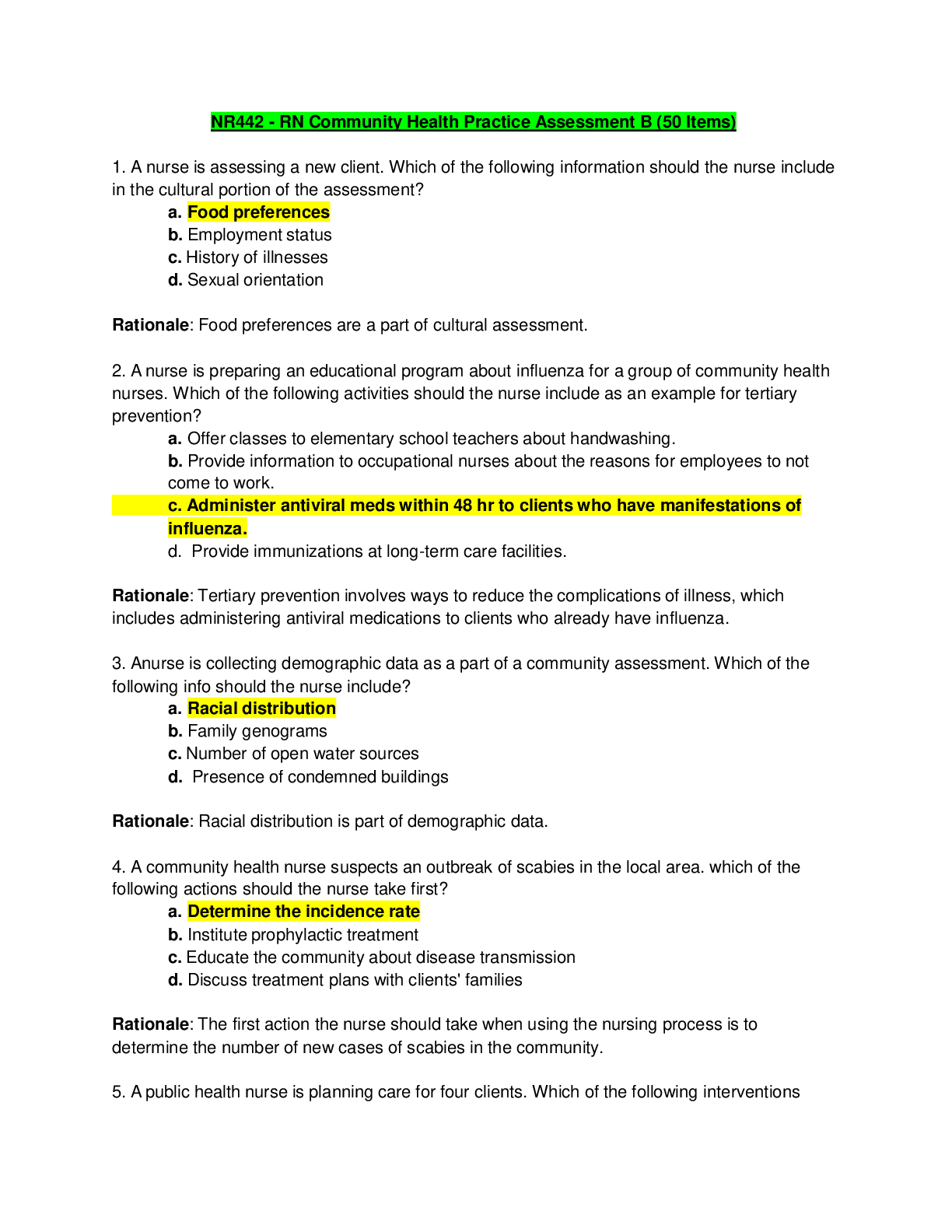

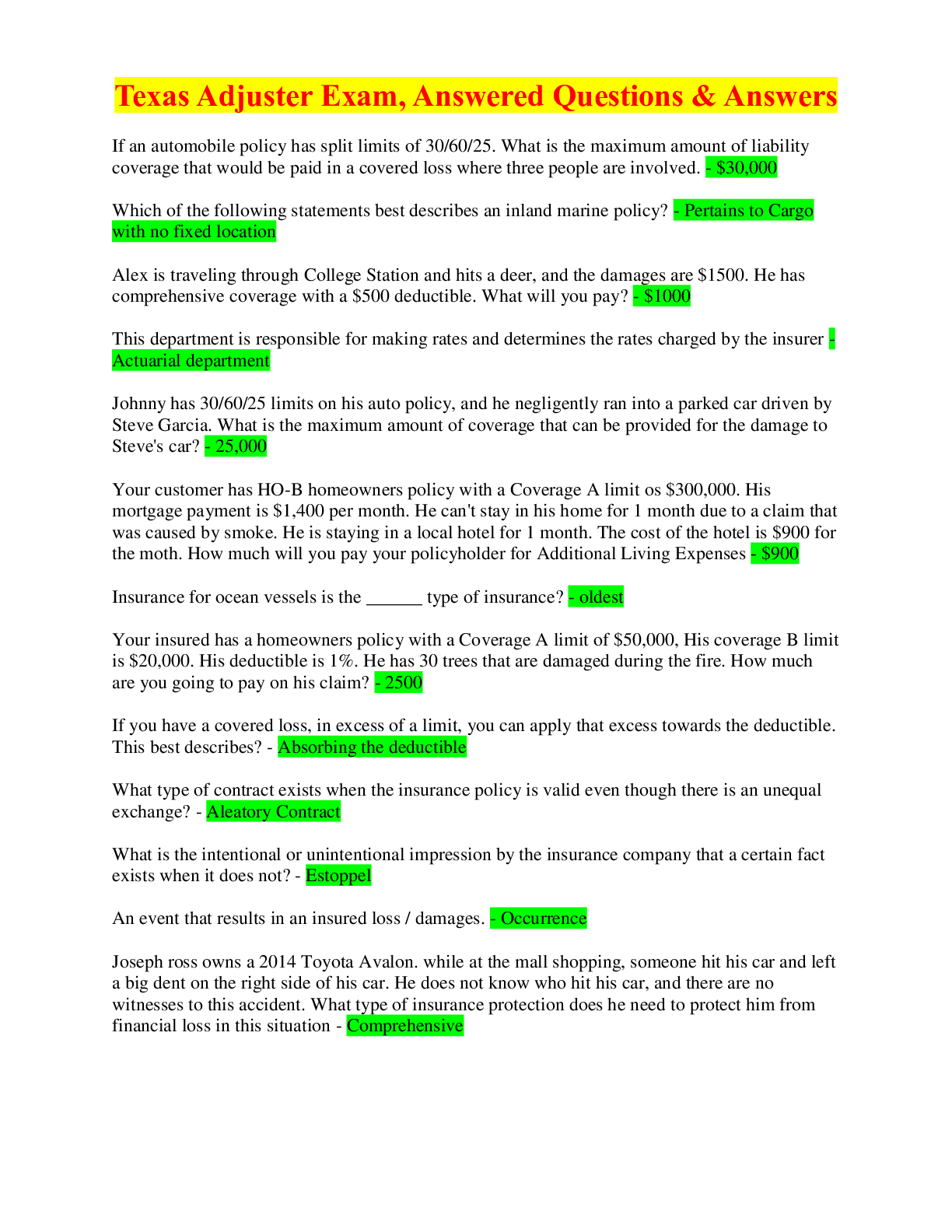
.png)
 (1).png)

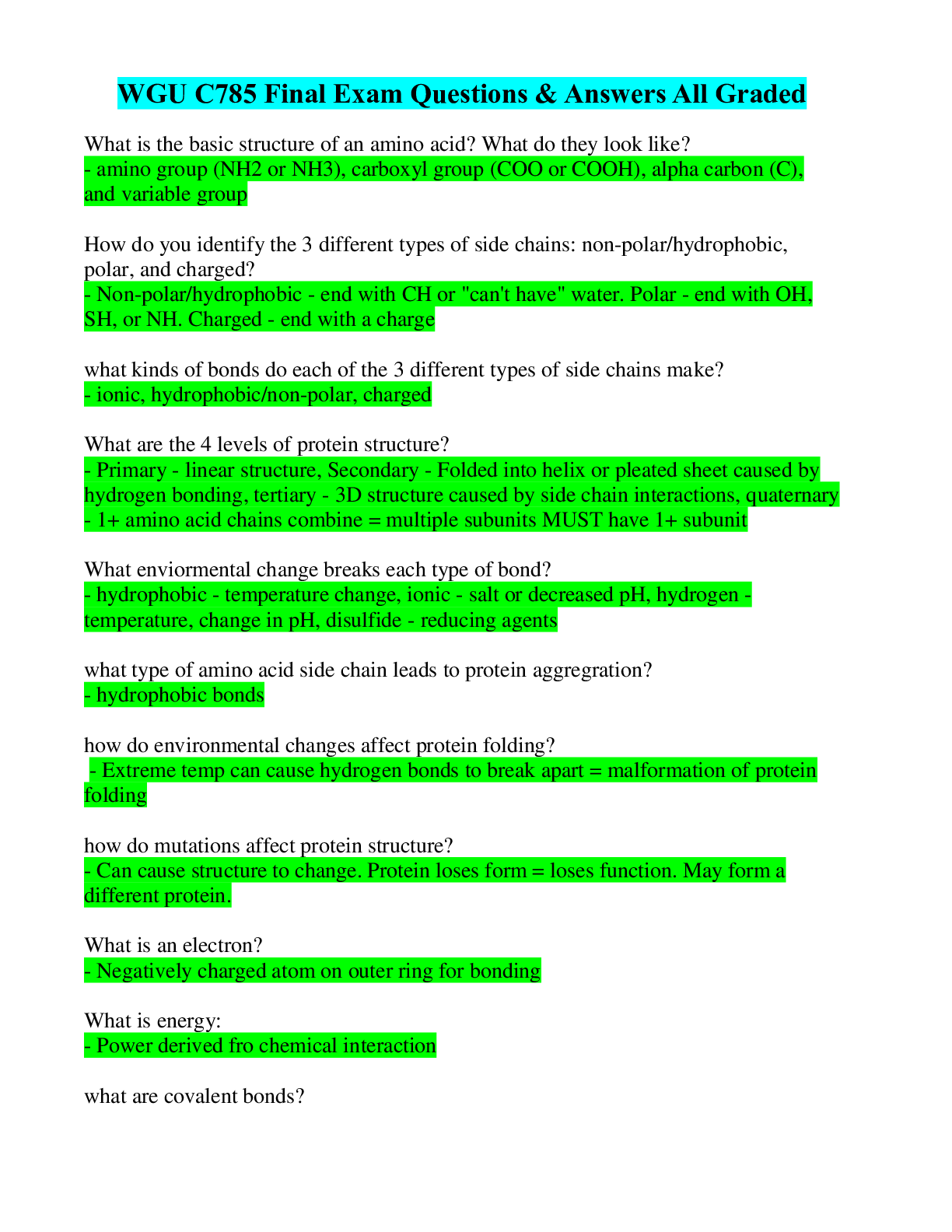
.png)
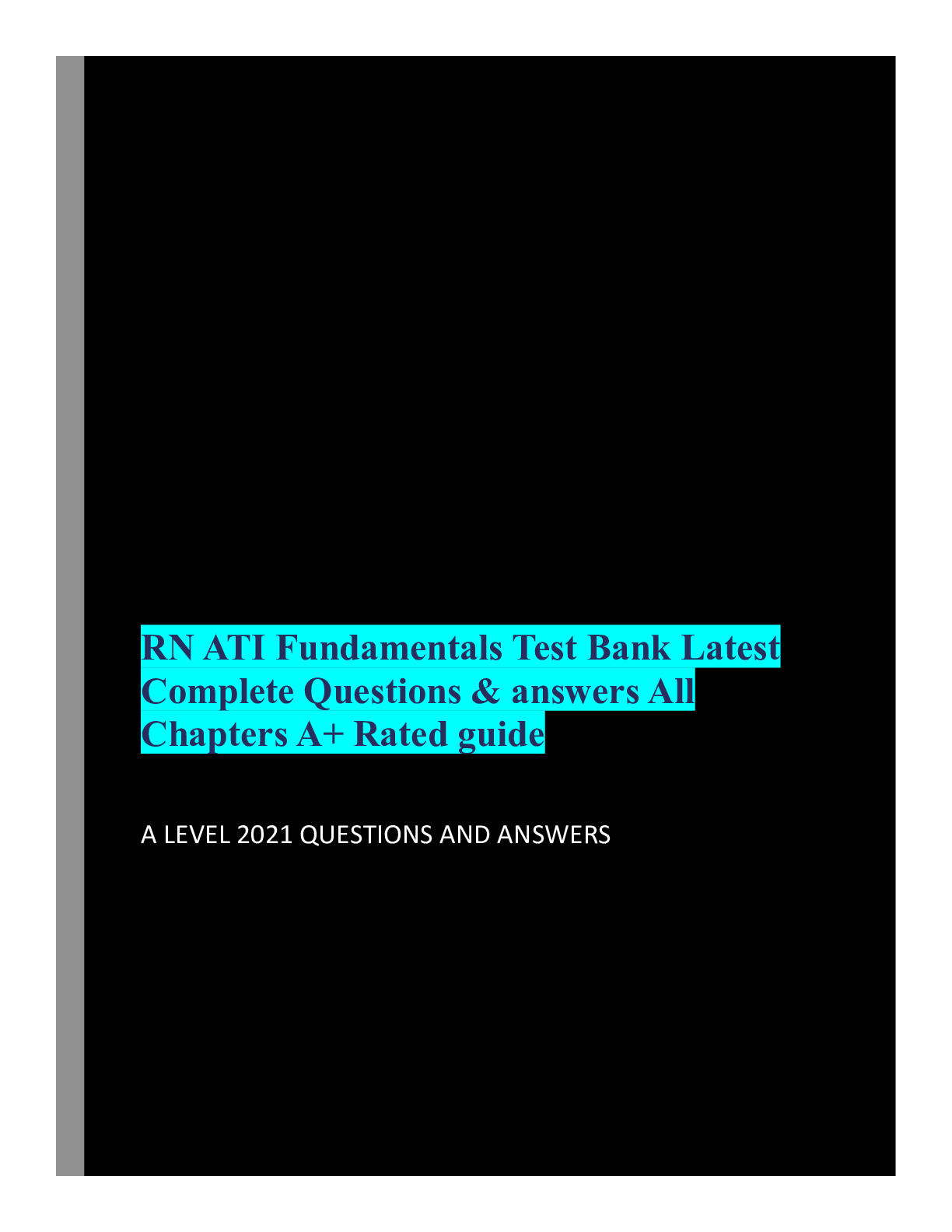
.png)


